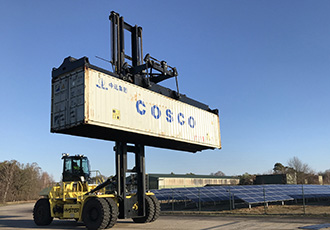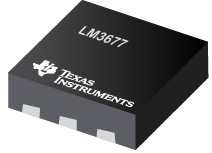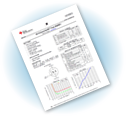Progress for electric container handlers

With electrification projects underway for the Port of Los Angeles in the US and Valencia in Spain, Hyster Europe reveals some surprising facts about the progress of the zero-emission Container Handler projects. Two Laden Container Handlers and one ReachStacker are currently in development at the Hyster Big Truck Development Centre in the Netherlands.
The zero-emission machines incorporate electricity at high voltage as the main energy source to power fully electric motors.
Testing has shown that the machines in development offer comparable, or potentially even better, performance to the equivalent IC models and provide excellent energy efficiency and a low cost of ownership.
Project Leader for Hyster Europe Willem Nieuwland explained: “The energy recovery achieved by the Container Handlers in test is more than expected, largely due to the full flow hydraulic energy recovery. Energy consumption reductions of up to 15% are expected compared to trucks without these systems.”
Patented Hyster energy recovery systems recover and store energy from lowering loads and braking. The innovative systems help to increase uptime through longer periods between charges, while also helping to reduce the overall energy costs.
The first electric Hyster H1150HD-CH is purely powered by a large lithium-ion battery, which is charged by a high-power, wireless fast charger. It will be used by a port operator in the Port of Los Angeles.
Hyster expects that the ‘battery-only’ approach will suit applications with a medium-duty cycle where there is suitable energy infrastructure and a strict charge management regime for opportunity charging.
“It will not suit larger fleets due to the high demand on the electricity grid, or where multiple trucks are charged at the same time,” said Nieuwland. “Managing peak power demand will be a complex challenge for some operations, which is where the fuel cell comes in.”
The second electric Container Handler Hyster has developed also features a large lithium-ion battery but is re-charged by two onboard fuel cells during operation. This approach better suits the challenges of the test site at Fenix Marine Services in the Port of Los Angeles and other heavy-duty terminal operations.
“The use of hydrogen reduces planning complexity or charging. Continuous operation is possible as long as hydrogen is available from the on-board hydrogen tanks. Even where refilling is required, this is only expected to take around 15 minutes,” continued Nieuwland. “Plus, the battery can also be charged during lunch and other breaks to minimise refuelling requirements further.”
Hyster Europe is also developing an electric ReachStacker featuring hydrogen fuel cells for the Port of Valencia, as part of the European Horizon 2020 programme and H2Ports project. The MSC Terminal Valencia (MSCTV) will be the first in Europe to incorporate hydrogen energy in its operations.
Nieuwland confirmed: “We expect the Hyster electric ReachStacker to support continuous operations and achieve comparable, or better, full shift performance to a conventional IC ReachStacker.”
Overall benefits of the electric powered container handlers
“We have been amazed by the instant responsiveness of the electric Container Handler in testing,” Nieuwland added. “The accuracy and control of the lift and drive is even better than the IC models, giving handling precision that we expect can only increase productivity further.”
Noise levels are lower, and users can expect a reduction in energy costs. The company also expects reduced vehicle maintenance costs thanks to the elimination of the engine, transmission and other mechanical-driven components with potential return on investment achieved after three to four years when compared to IC models.
The three projects are in association with several partners and has support from funds including the Fuel Cells and Hydrogen Joint undertaking (FCHJU) and the California Air Resources Board (CARB) which is partially funded by California Climate Investments (CCI), a statewide program that puts billions of cap-and-trade dollars to work reducing greenhouse gas emissions, strengthening the economy and improving public health and the environment, particularly in disadvantaged communities.
Similar articles
More from Hyster
- Is the future of forklifts all electric? 18th December 2019
- Second rail container handling options launched 13th November 2019
- Specially engineered lift trucks refresh operations 31st October 2019
- Save moving costs with with Spacesaver lift trucks 9th October 2019




.jpg)







Write a comment
No comments